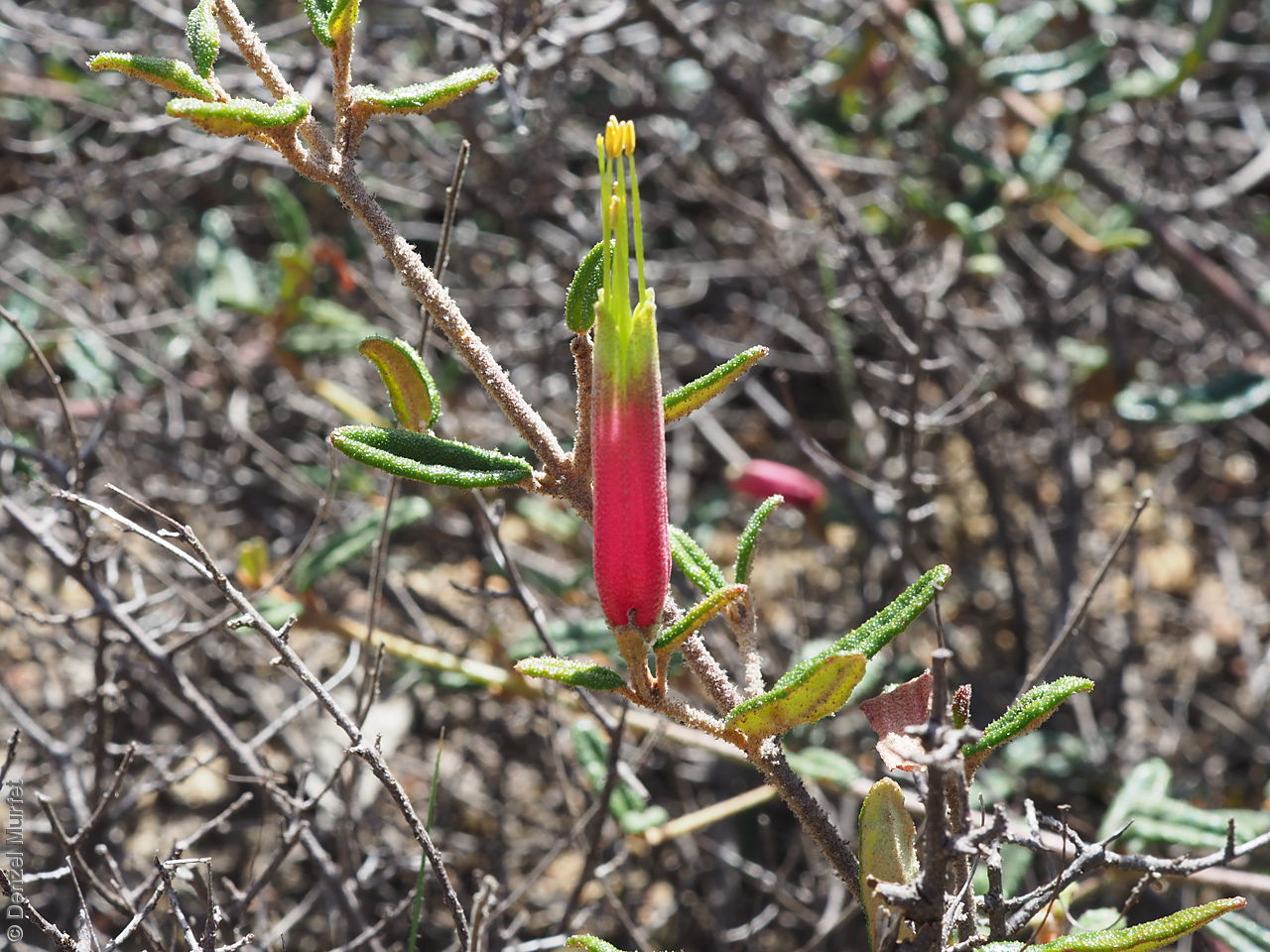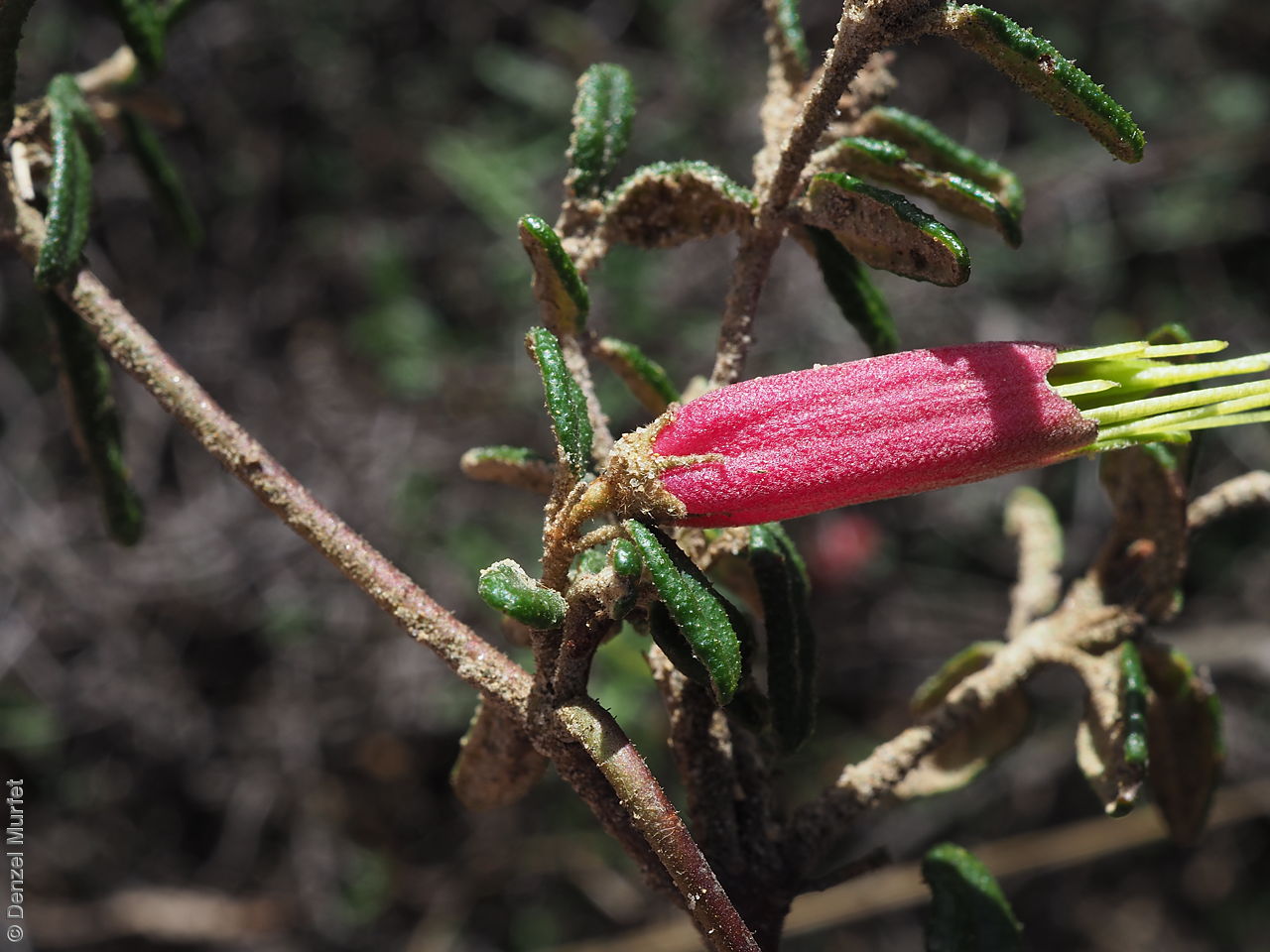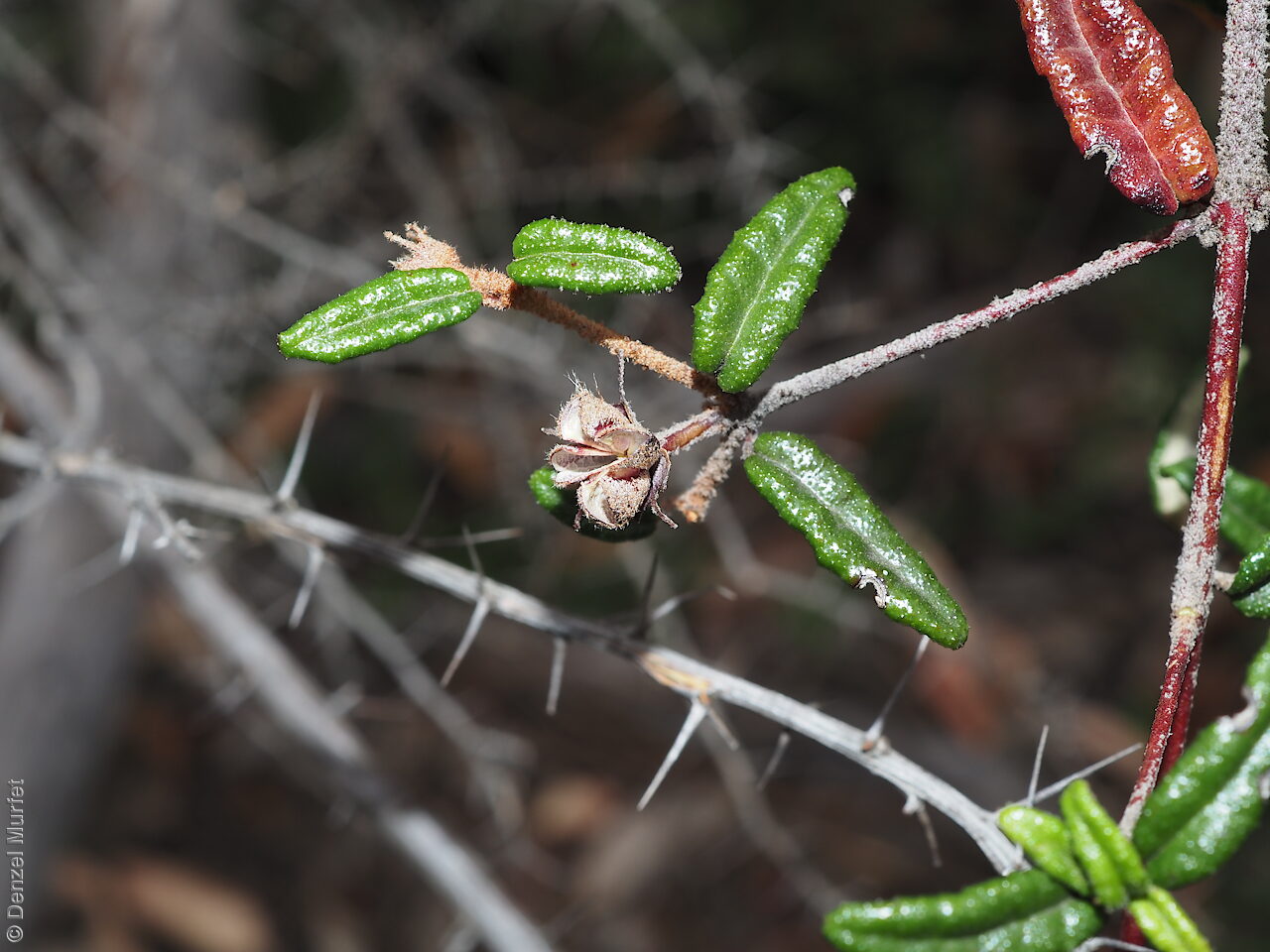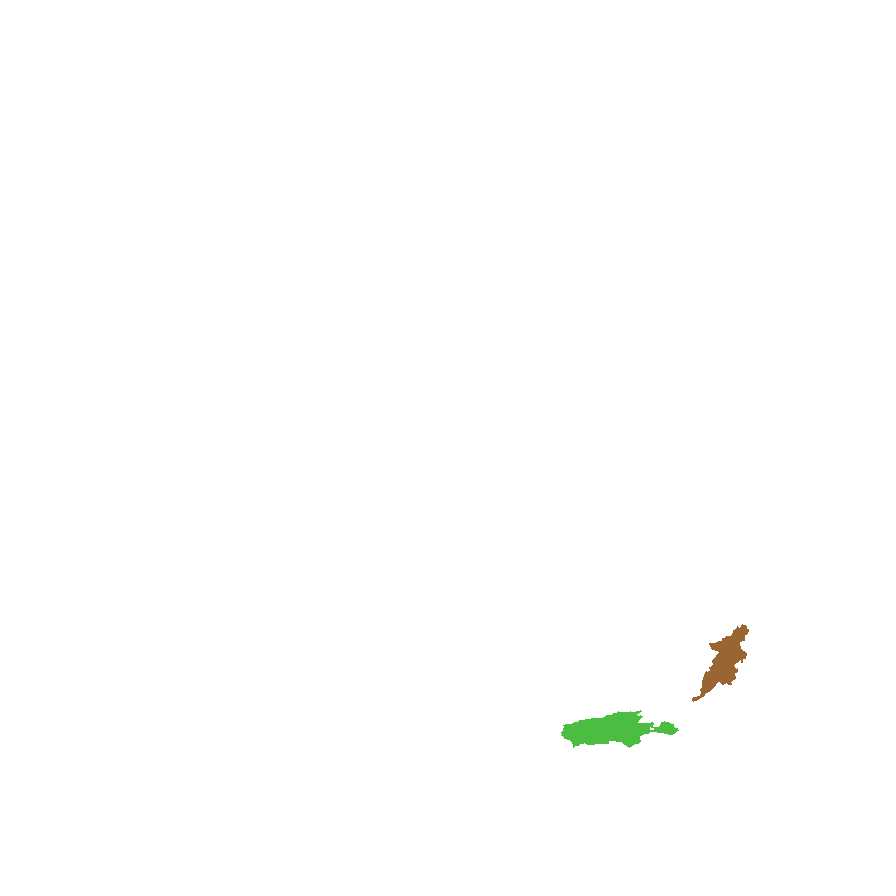







Botanical art
Etymology
Correa named after Jose Francisco Correa de Serra (1751-1823), a Portuguese botanist. Decumbens from Latin meaning prostrate on the earth with the tips turning up; referring to the decumbent leaves and flower spike.
Distribution and status
Endemic to South Australia and found in the southern Mount Lofty Ranges and on Kangaroo Island, growing in open scrub dominated by Eucalyptus cladocalyx on Kangaroo Island and in stringbark In the Mt Lofty Ranges. Native. Uncommon in South Australia.
Herbarium regions: Southern Lofty, Kangaroo Island, Green Adelaide
NRM regions: Adelaide and Mount Lofty Ranges, Kangaroo Island
AVH map: SA distribution map (external link)
Plant description
Low erect shrub to 1 m high with a reddish-brown hairs on young branches. Leaves narrowly elliptic-oblong, to 5 cm long and 1 cm wide, dark-green, glabrous above and hairy reddish-brown on the lower surface. Inflorescence solitary more or less erect on short axillary branchlets, with an erect narrow tubular pink-red with yellow-green tips flower. Flowering between November and February. Fruits are brown capsule to 10 mm long, enclose by the sepals. Seed embryo type is linear fully developed.
Seed collection and propagation
Collect seeds between January and March. Collect mature capsules, those that are turning a pale straw colour and contain hard seeds, either by hands or place small breathable bags over immature capsules to collect seed. Capsules maybe hard to see as it is enclose by the sepals. Place the capsules in a tray and leave to dry for a weeks. Then rub the capsules gently by hand to dislodge the seeds. Be very careful as the seed coat is thin and easily damaged. Use a sieve to separate the unwanted material. Store the seeds with a desiccant such as dried silica beads or dry rice, in an air tight container in a cool and dry place. This species has morphophysiological dormancy and can be difficult to germinate.